The day before our live truck operator, Kevin Greer, had struck up a conversation with one of the Chambers County locals who told him some of the stories of survival that she'd heard. Apparently the Chambers County clerk had interviewed a survivor who tried to ride out the storm in his home on the Bolivar Peninsula. As his home flooded, he swam out the window and floated across the bay hanging onto a tree trunk that was floating in the surge. Kevin was heading with his camera and live truck to Anahuac Hospital to try to find this guy. Carolina and I were going to try to find Uncle Donny again.
We traveled the same path as we did the day before. We stopped at Donny's brother's house again, but they had no idea where he was. Rather than spend the day searching for Uncle Donny, Carolina and I headed to Oak Island, just down the road from Double Bayou. Kevin Greer driven through Oak Island the previous day and told us it looked like an atomic bomb had been dropped into the center of this small, waterfront community. When we arrived we saw that Kevin's description was not an overstatement.
The closer we got to the water, the less houses looked like houses and more like debris fields. The field to our left on the way into the community had a roof and countless pieces of clothing.
 Another house had its roof smashed down onto and into the first floor. At the edge of town the a brush line was so thick full of all kinds of debris, the vegetation was no longer visible. Then we saw what was left of the neighborhood. Slabs where houses or trailers once stood were bare. Front porch steps led up to nothing. It reminded me of the devastation on the Mississippi coast after Katrina. Hurricane Ike's winds and surge came rolling in and nothing man-made was going to stop it.
Another house had its roof smashed down onto and into the first floor. At the edge of town the a brush line was so thick full of all kinds of debris, the vegetation was no longer visible. Then we saw what was left of the neighborhood. Slabs where houses or trailers once stood were bare. Front porch steps led up to nothing. It reminded me of the devastation on the Mississippi coast after Katrina. Hurricane Ike's winds and surge came rolling in and nothing man-made was going to stop it.We were told by some of the residents that there were nearly 350 homes in the community. Looking around I only saw a handful, maybe half a dozen still standing, none unscathed.

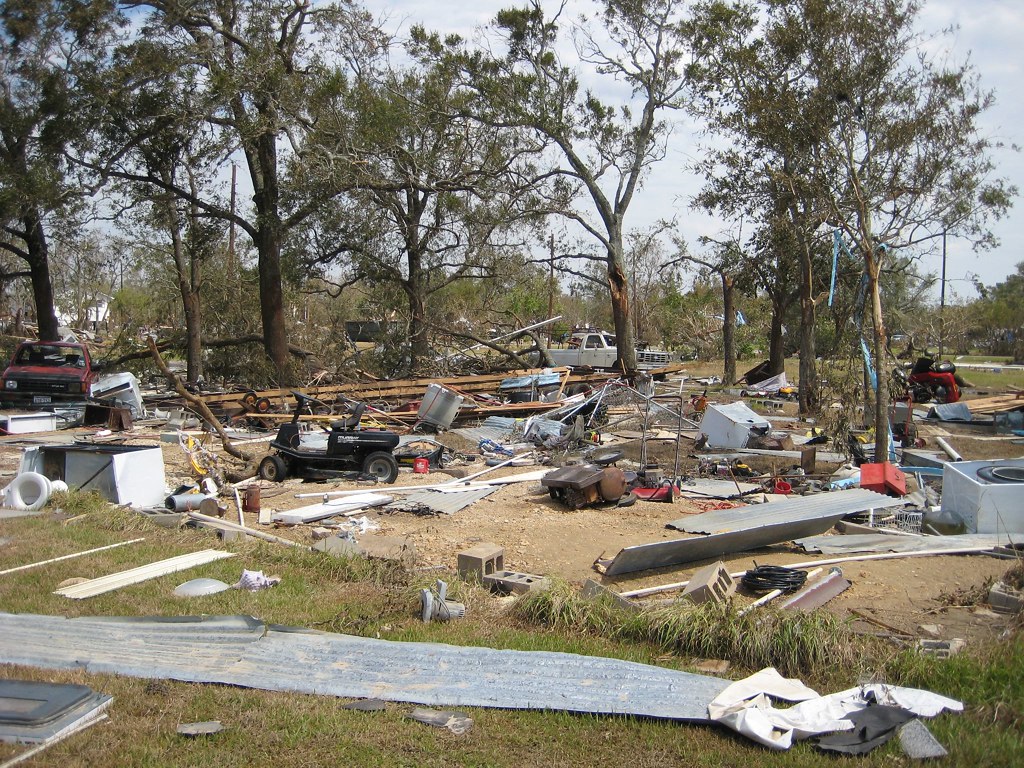
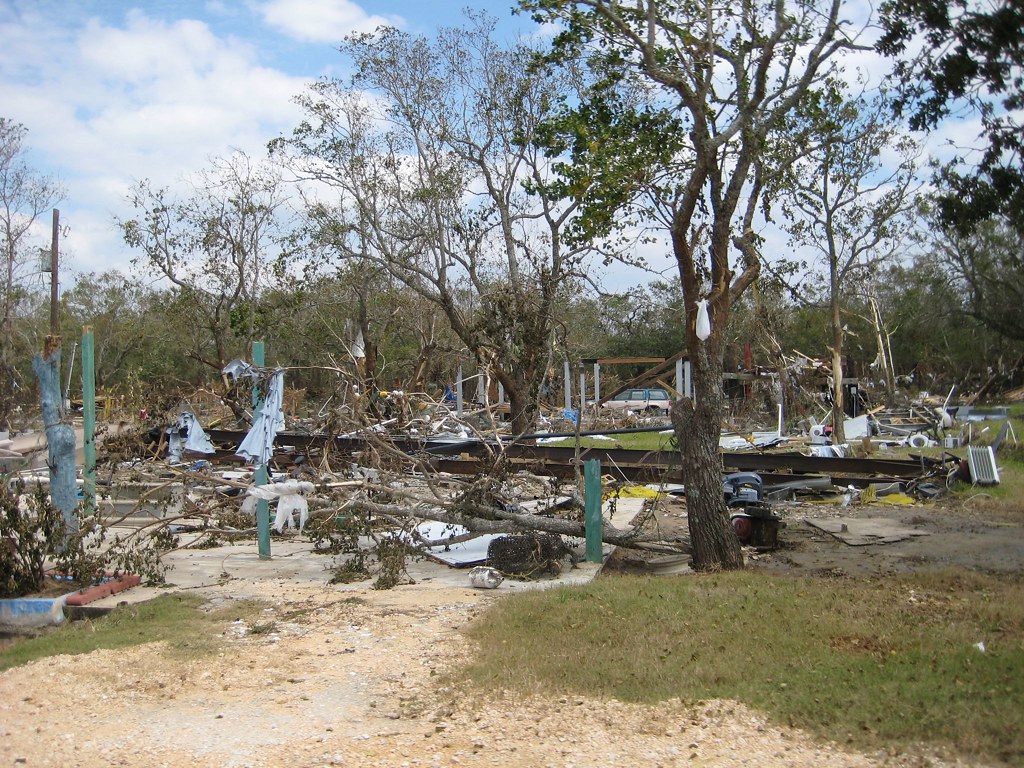

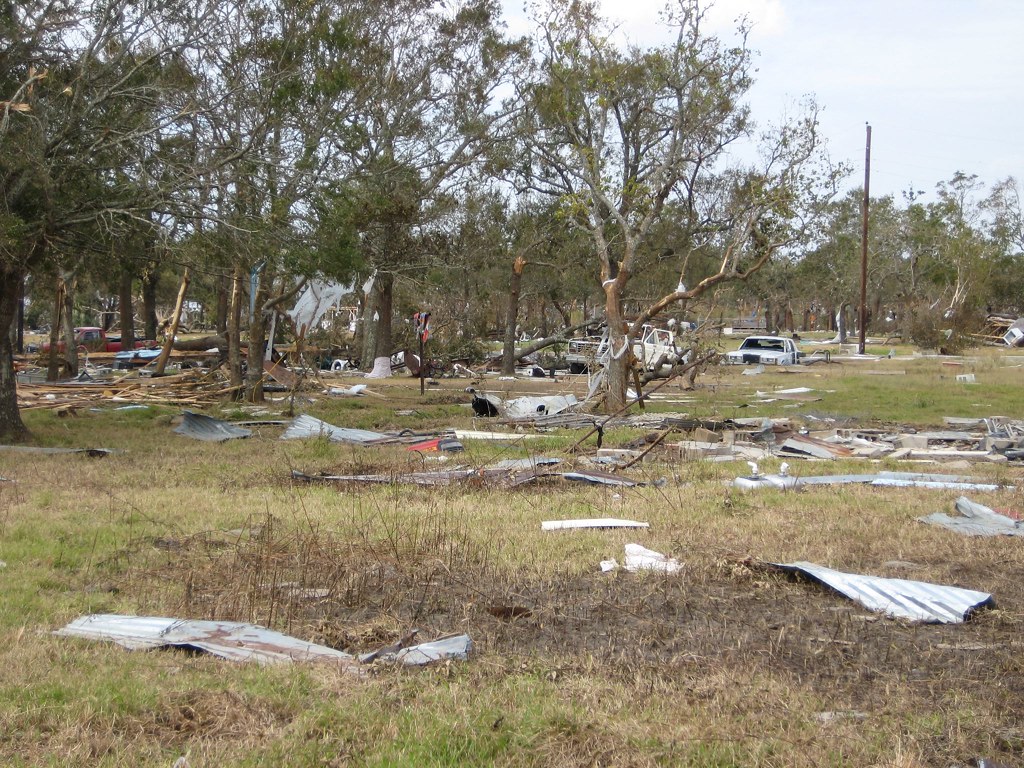 You've heard it before, but Oak Island was one of those places that you see on television and it looks bad, but until you see it in person and smell it, you really have no idea how bad it is. I could make this blog 10 pages long and still not give justice to the power of this storm or what the survivors are still going through to get their lives back in order.
You've heard it before, but Oak Island was one of those places that you see on television and it looks bad, but until you see it in person and smell it, you really have no idea how bad it is. I could make this blog 10 pages long and still not give justice to the power of this storm or what the survivors are still going through to get their lives back in order.Carolina and I decided to turn a character-based story on several of the survivors in Oak Island. The community is mostly low-income and many of its residents are on some type of government subsidy. They couldn't afford a hotel even if they could find one. Most wouldn't have stayed in a hotel anyway. They didn't want to stay in the temporary shelters that had been set up. Fearing what little they had left would be stolen by looters, many residents slept in their cars and did not venture far from the town. One resident told me about how he reported that he'd chased looters off of his property to an officer patrolling the area. The officer saw a shotgun hanging in the back of this guy's pickup truck and asked if it was really loaded. The resident told the officer it wouldn't do any good if it wasn't. I love Texans.
One of the girl we were interviewing's friends ran to tell her that they'd found her nightstand in a field nearby and its contents were still inside. We decided to make that the focus of our story.
After we finished shooting the story, Kevin Greer called us with his satellite phone (the storm also damaged many cell towers and cell service was really hit and miss). He was still in Anahuac. He'd talked to the county clerk and she told him the story about the guy riding out the storm on a log was true. Kevin got a cell phone number and was able to make contact with the guy and confirm his story. This guy, I'll call him John since I can't remember his name, was a retired postal worker and former marine living on the Bolivar Peninsula. His wife left before the storm, but he decided to ride it out from home. As the surge moved in, he was forced to swim out his window to save his life. He was able to grab onto a telephone pole as the surge pushed him off of the peninsula and out into the bay. He said he was not worried about drowning as much as he was being hit by the flying debris. Somewhere along this journey a child's life vest floated by and he was able to squeeze into it. Later a kayak floated by and he was able to upgrade from his telephone pole to the strap on the kayak. He doesn't remember a whole lot after that, but he was found the following day hanging from a tree. The only injuries he suffered were some cuts and scrapes, and two broken ankles. We had to interview this guy. He told Kevin that he had been taken from Anahuac to Huntsville, Texas about an hour north of Houston.
Carolina and I set off and met Kevin in Anahuac. Back west down I-10 we drove for about 30 minutes when Kevin pulled his truck off the road. He'd called Survivor John back for more specific directions. Survivor John wasn't really in Huntsville, he was closer to Dallas. Kevin would have to go interview him the following day, because we didn't have time to make the drive and we had to get something on the air.
Back to Oak Island.
It didn't take long to put the story together once we got back. Carolina had written it during the ride back. Here is the story we filed:STANDBY="Loading Windows Media Player components..." TYPE="application/x-oleobject">
WIDTH="192" HEIGHT="190" ShowControls="1" ShowStatusBar="0" ShowDisplay="0" autostart="0">
While Kevin was breaking down the live truck for the trip back to Houston, I snapped off a couple more photos from the area.
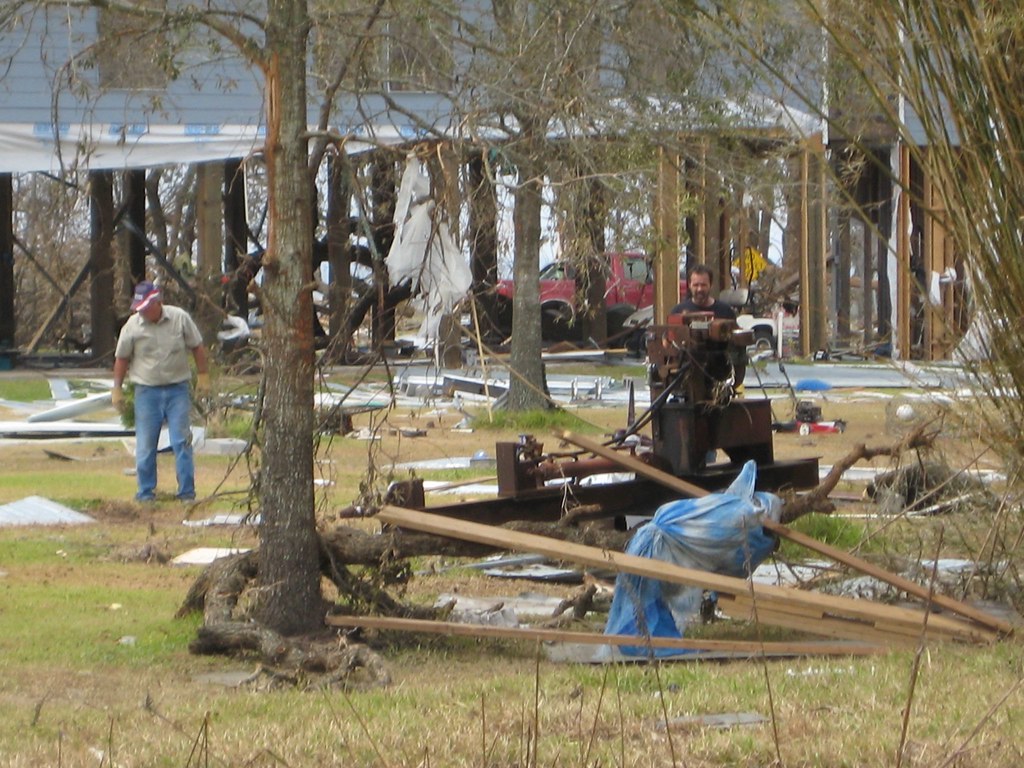

This is one of my favorite photos:
 It shows the Texan character.
It shows the Texan character.Here are a few more:
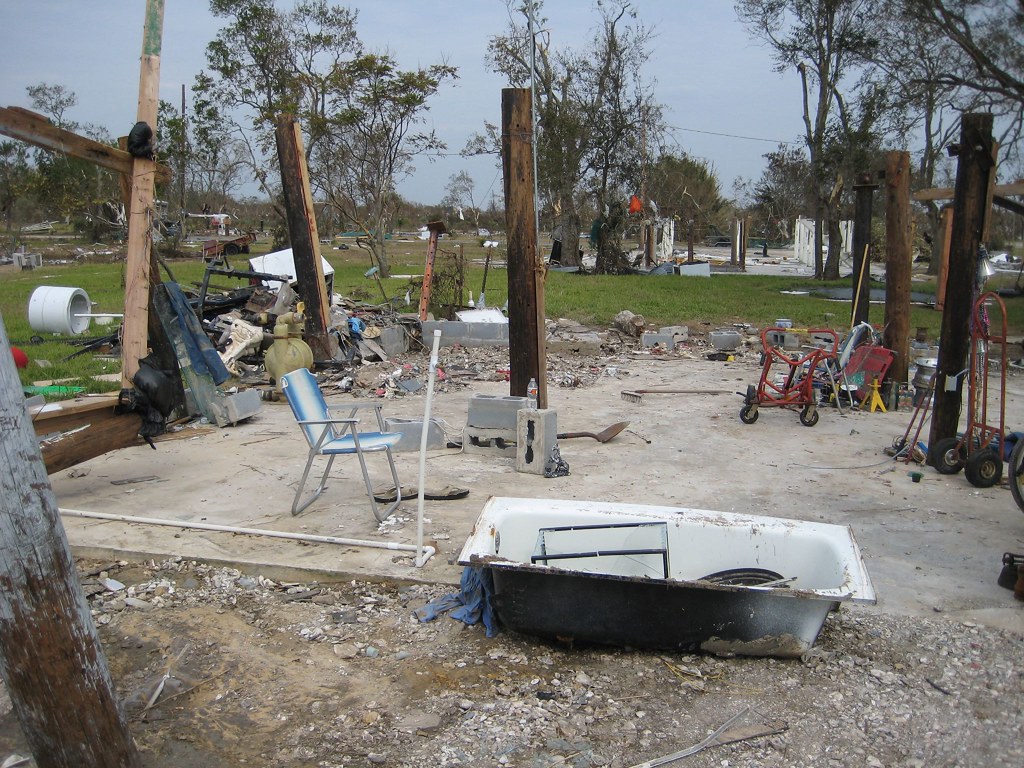

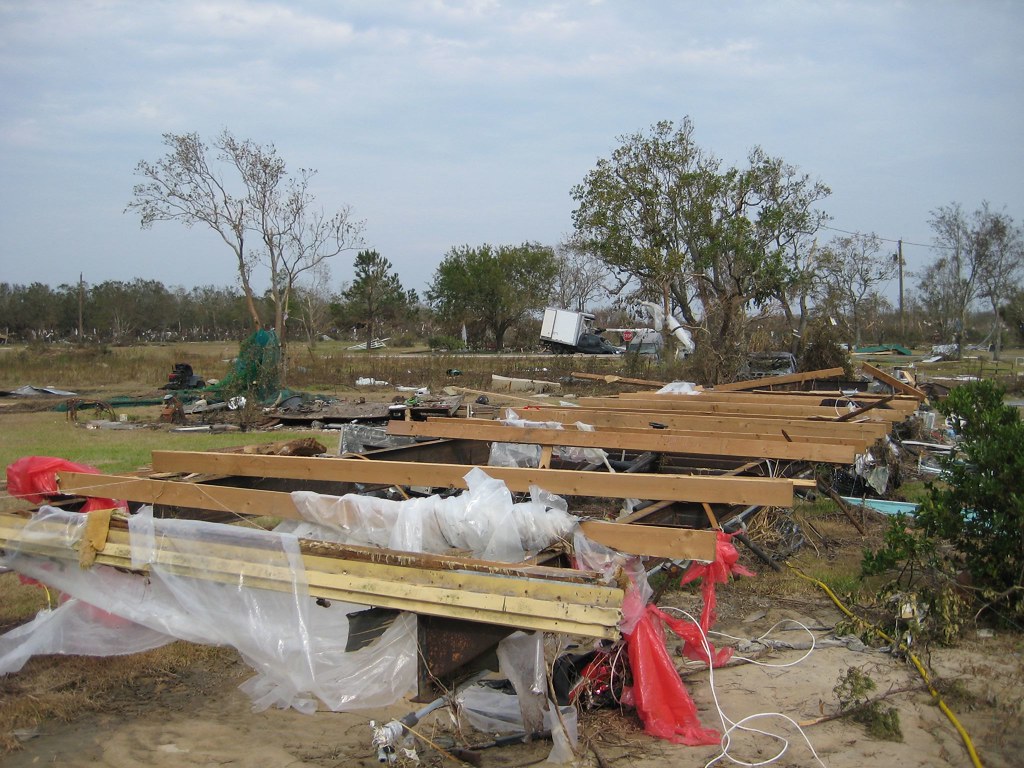
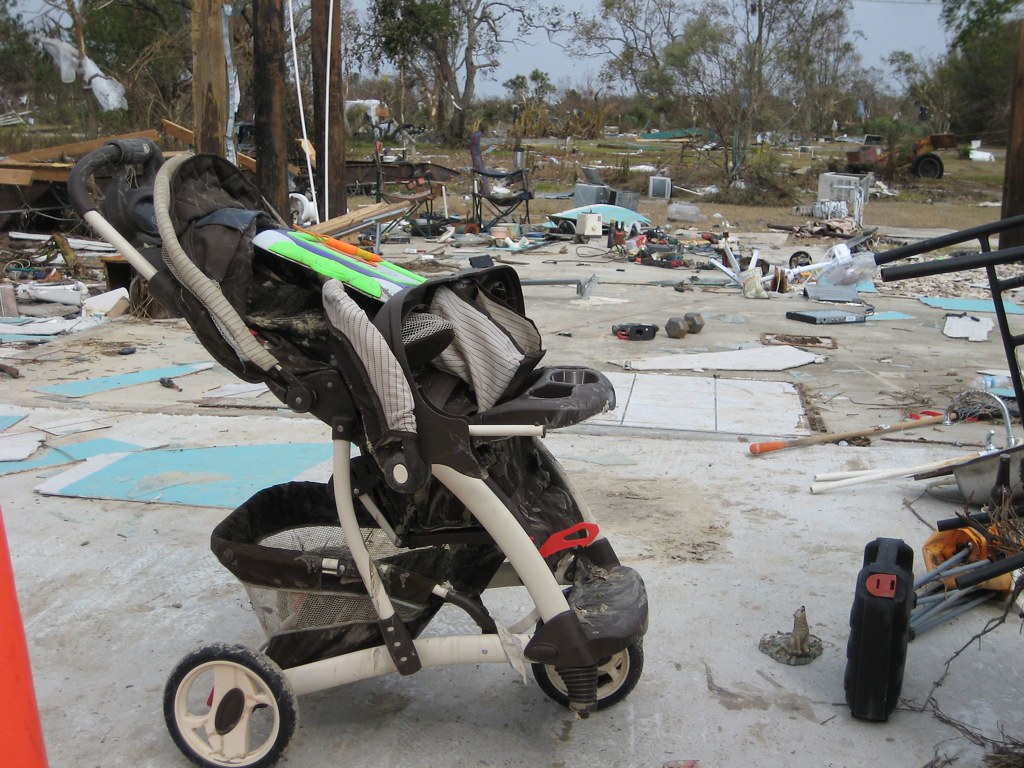
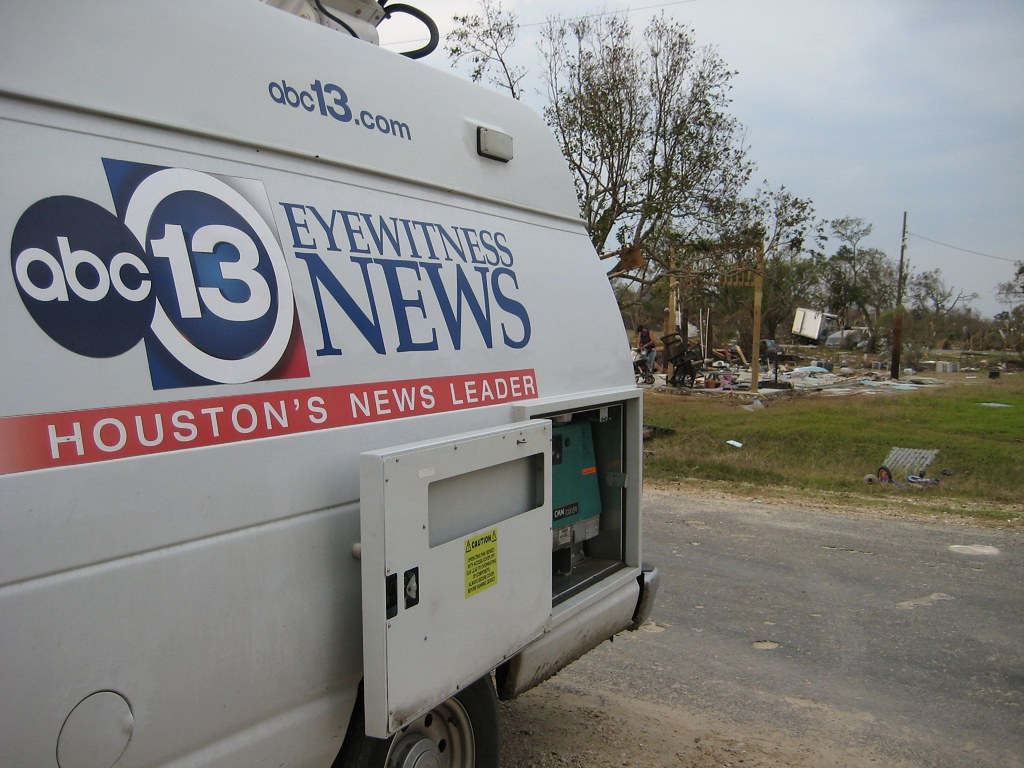
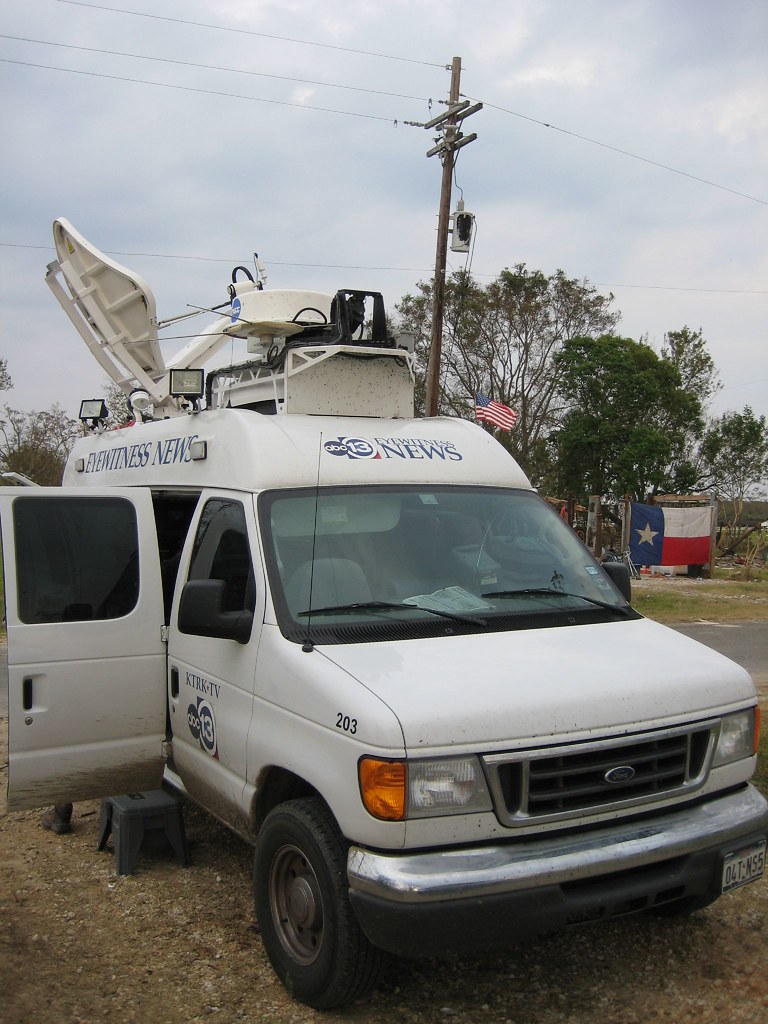
Just before we left the sun began to set on the water. One of the waterfront homes that survived was elevated and located next to where we did our liveshot. The couple that lived there sat under the house watching the sunset. "Isn't this great?," they yelled over to me. With all they've been through, they still took pleasure in something as simple as a sunset. Here are a few of the sunset shots:

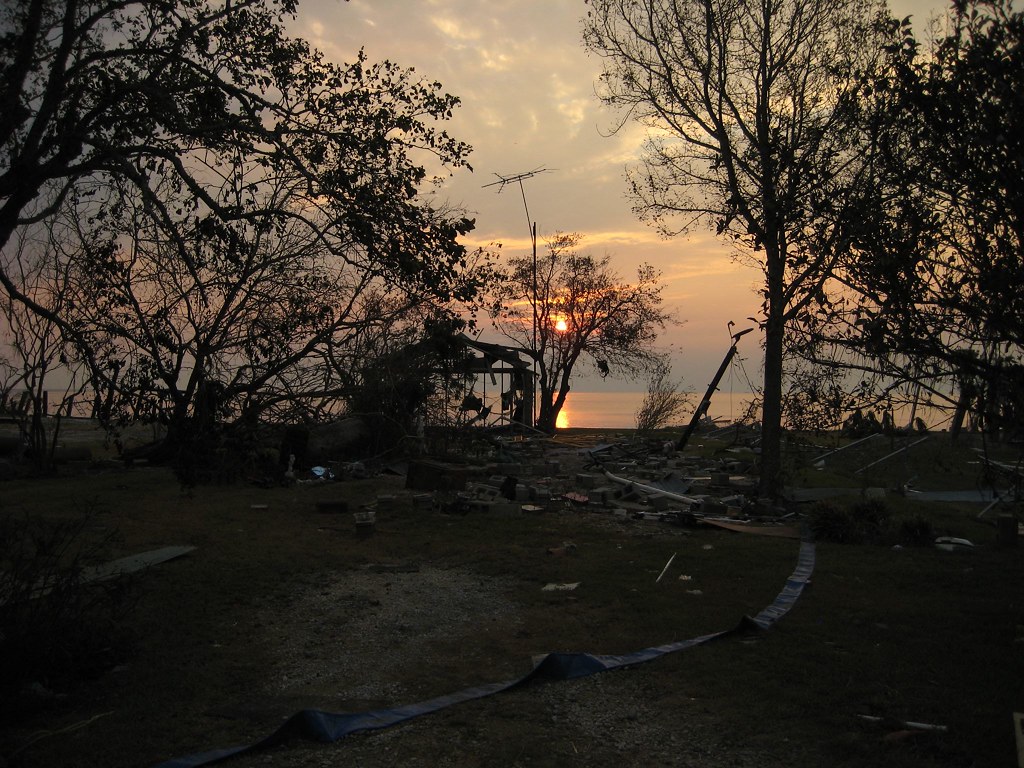
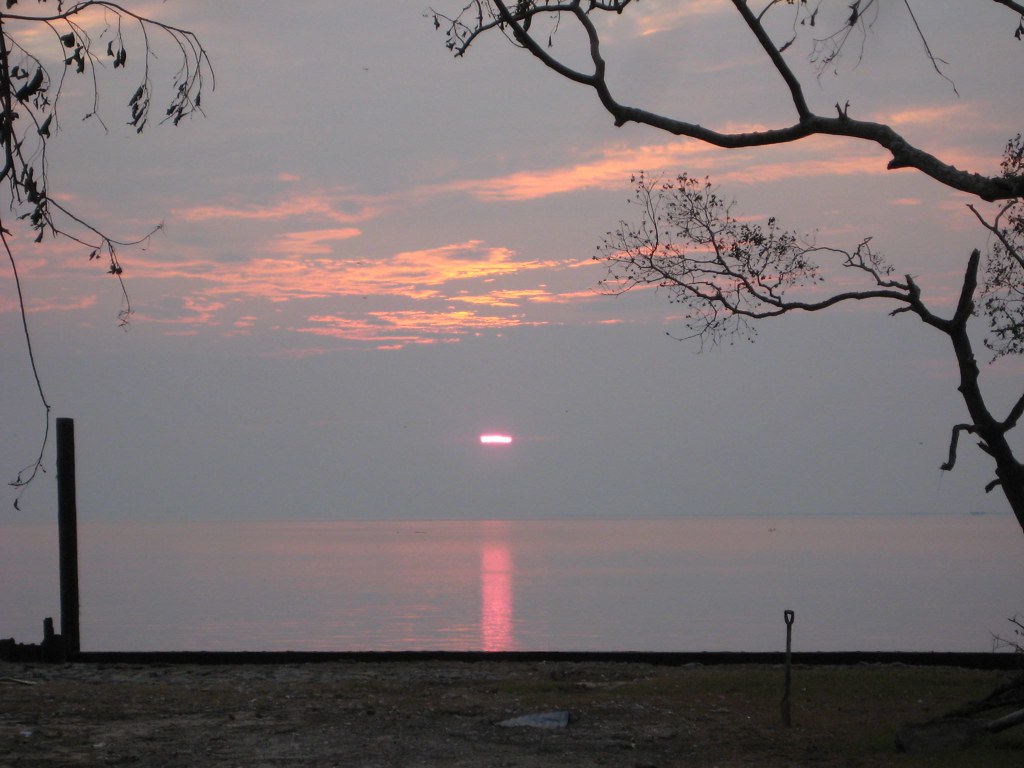


Here's me with WABC reporter Carolina Leid:

The rest of the trip I worked without a reporter. By Friday, September 19, most of the crews from the other ABC O&O's had gone home. I think the Toledo crew was the only one that stayed. Friday things were calming down at the station a little bit. They were still covering the hurricane recovery, but they had resumed normal hours for their newscast times. It was kind of a quiet day from me too. The assignment desk decided that the north Houston suburbs hadn't had much focus and had me head there by myself to talk to some people in some different neighborhoods.
First I hit the Garden Oaks and Oak Forest neighborhoods on the northwest side of Houston. These are established neighborhoods. Middleclass. Most of the houses are 30+ years old. Ike's winds didn't spare them. Being an established neighborhood, many of the trees have reached maturity. On either side of the road there was a debris pile 6 feet high stacked with a combination of brush and huge logs. To make a comparison, this area is similar to the neighborhood surrounding the city of Sylvania's water tower. The difference is about one third of the largest trees had come crashing down. The residents I talked to, though still without power, seemed to be in good spirits. The other thing that suprised me was the number of homes that were able to come out unscathed. Yes, a few were hit, but so many of the big trees fell to the ground, totally missing the property owner's home.
I spent the afternoon gathering video of Houston's public schools. Some suffered damage, some didn't. It was announced that Friday that school would resume the following Monday. KTRK had a reporter at the school's headquarters, but he needed video for his story. After driving all over the city for a several hours, I hopped on I-610 to take him the video. I quickly found that Houston was returning to normal.
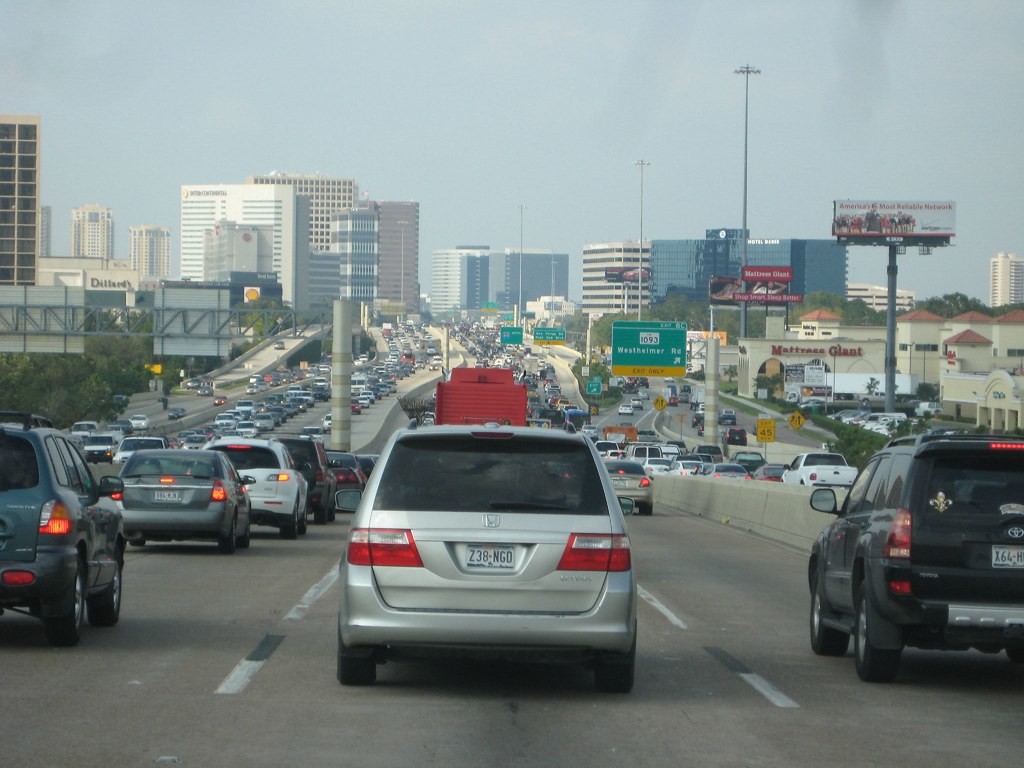

What should have been a 15 minute drive, according to my GPS navigation system, took me nearly 2 1/2 hours because traffic was backed up so bad.
Saturday morning I showed up to work and was sent solo to the small town of Webster. A church there was passing out food and bibles to anyone in need. The church was working with a group called God's Pit Crew. The Virginia-based organization runs a crisis response team to help those in need that travels all over the country. For hours, cars filed in and out of the church parking lot to get what assistance they could. Some of the Pit Crew members even traveled out to people's houses with chainsaws to help cut debris and speed up the recovery process.
Next I headed south down I-45 to League City. The Red Cross had established a base to prepare meals and load their Emergency Response Vehicles (ERV). I got there just as the last of the lunches were being sent out. In this area that must have covered 3 football fields, I was told over 100,000 meals had been prepared since they set up shop.
Next I was sent to a FEMA site that had reportedly shut down. When I got there I found that this was untrue. Somebody had driven by the site and saw the help tent was empty. This person then called KTRK and told them that FEMA was not helping those in need as promised.
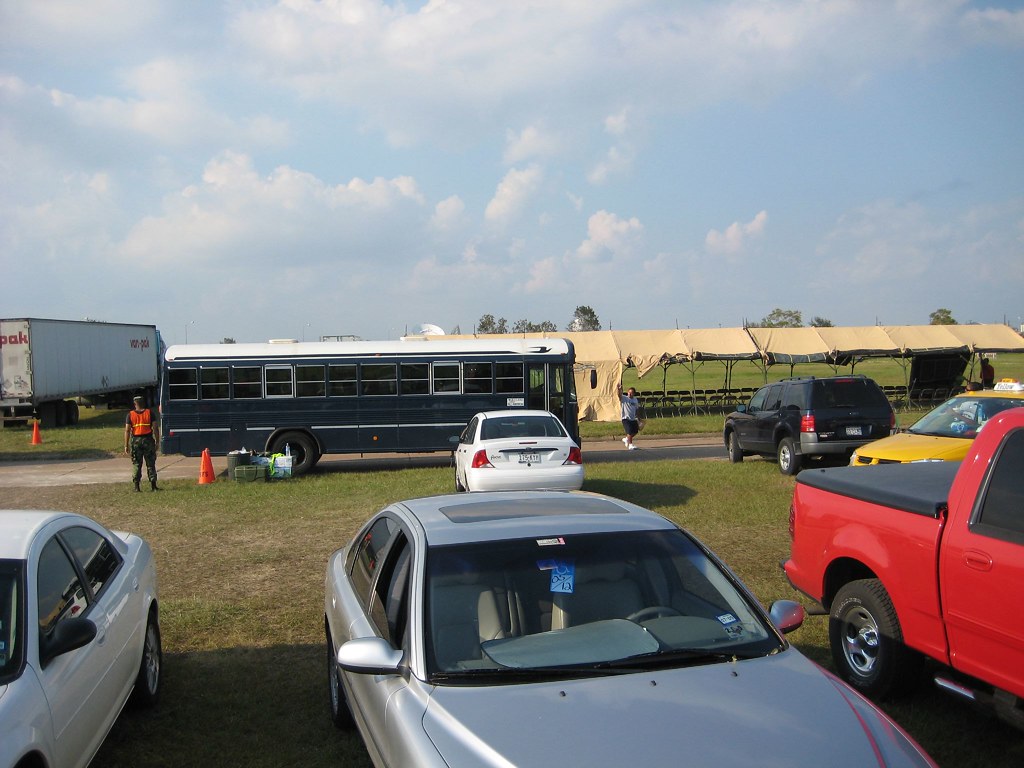
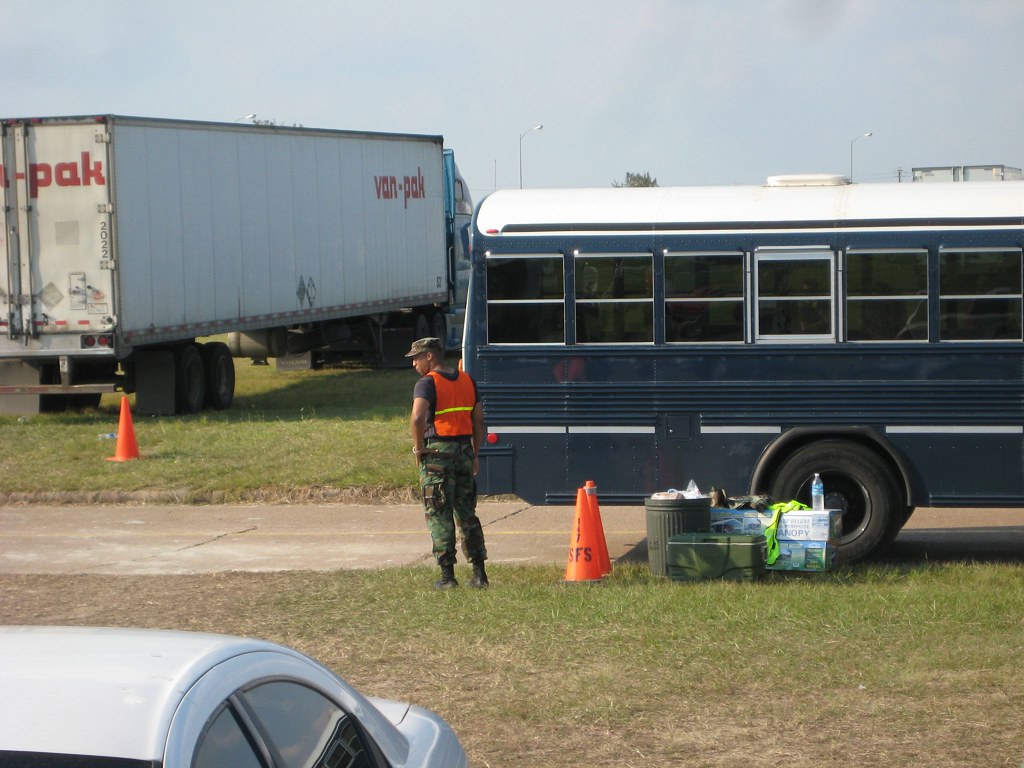 When I got there I found that FEMA representatives were taking initial information in the tent outside. If people met the requirements, they were bussed to an indoor location to complete the paperwork.
When I got there I found that FEMA representatives were taking initial information in the tent outside. If people met the requirements, they were bussed to an indoor location to complete the paperwork.I also spent some time that Saturday talking to people at the washaterias. What is a washateria? Nothing special, it's what we would call a laundry mat up here. Being without power for over a week now, people had run out of clean clothes and the waits at the washaterias were hours long.
Before I could go home for the day, I was sent out to the Ridgecreek neighborhood to get video of a home. A small family was found dead in their home after running a generator in their garage.
Kevin Beining and I decided we deserved a good meal Saturday night after all we'd done in the previous week.
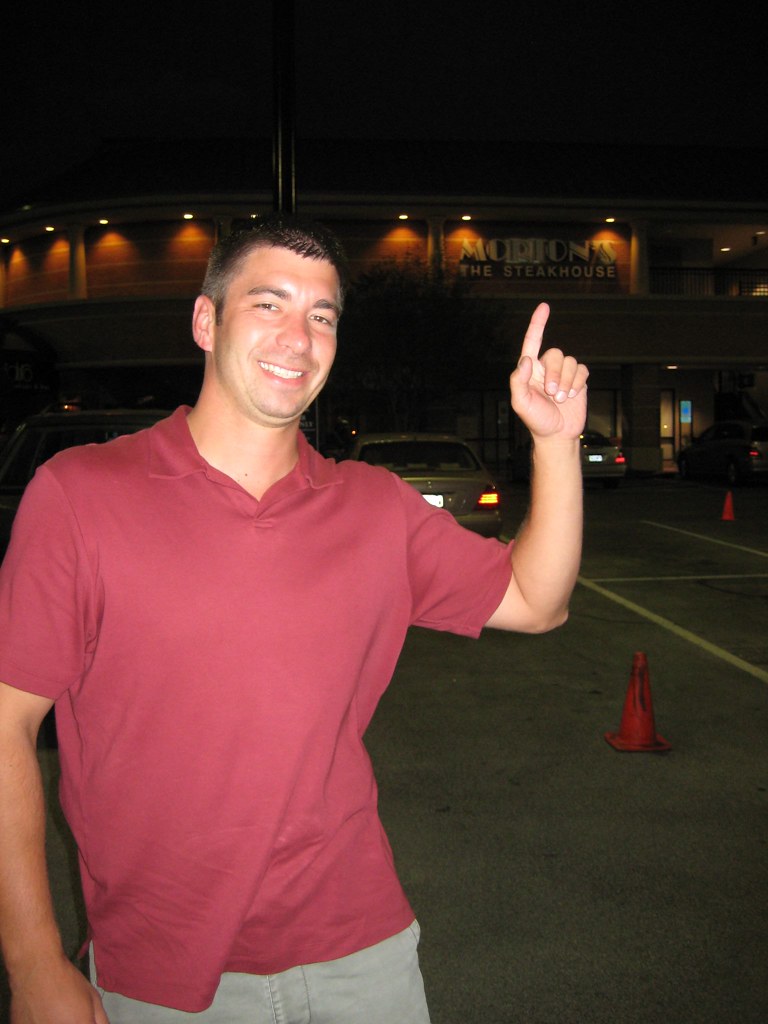
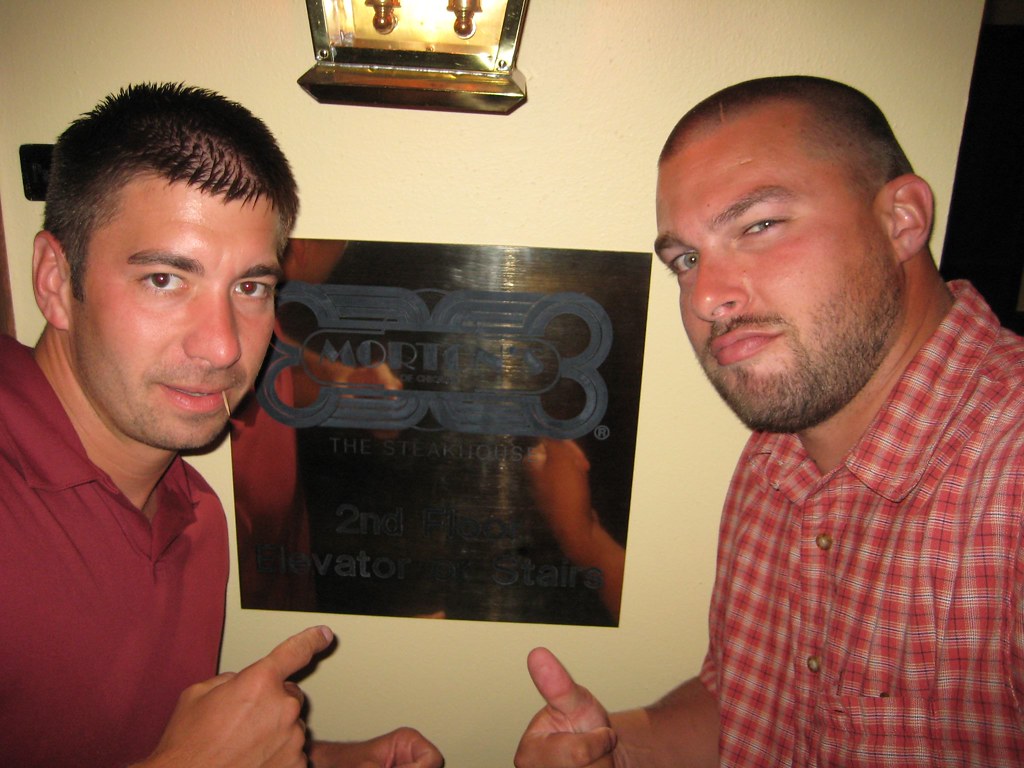
 We went to Morton's Steakhouse and had a couple excellent steaks. I also got to show off my new boots I picked up at Cavender's in Webster.
We went to Morton's Steakhouse and had a couple excellent steaks. I also got to show off my new boots I picked up at Cavender's in Webster.Sunday, September 21, 2008, our last day. We were ready to head home. But, before we could go home, we all had to go into work that morning. Our flight wasn't scheduled to takeoff until five in the afternoon. I was sent out to Deer Park, a community between Houston and Galveston. The Deer Park Church of Christ had been without power all week and had decided to hold Sunday Service in the parking lot. I talked to the pastor about a half an hour before the service was scheduled to start. He said he didn't expect many people because of the conditions. As the time for the service neared the entire parking was completely filled.
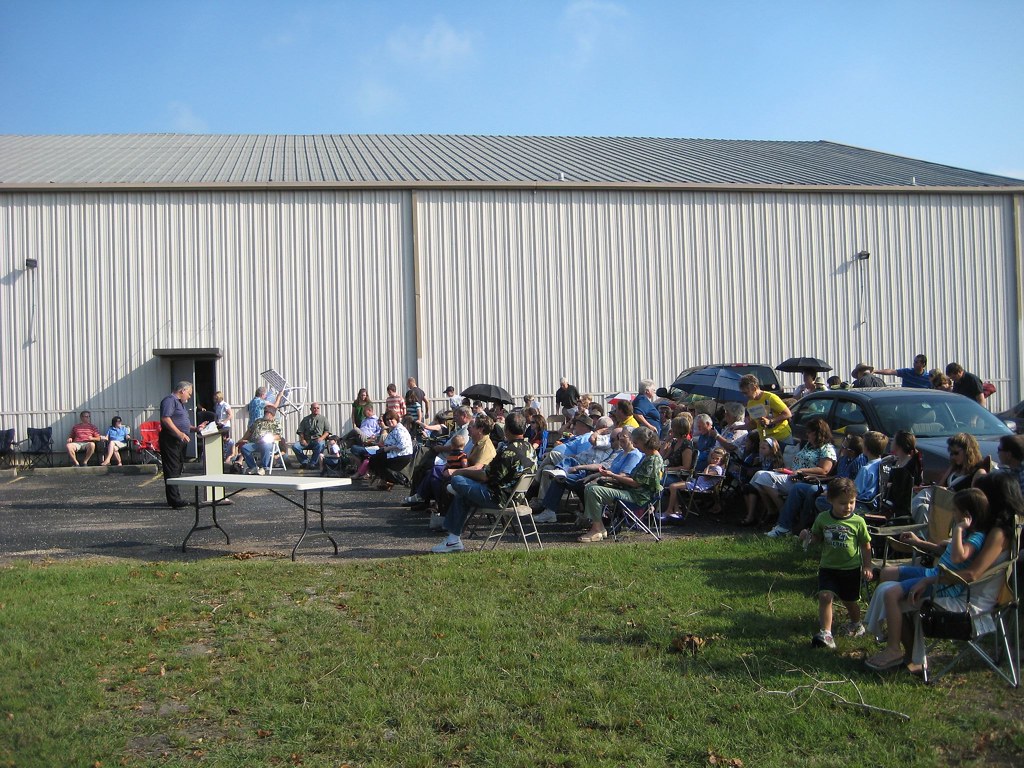
The entire congretation had come out with umbrellas, bug spray, and lawn chairs. It was a pretty cool sight to see. About five minutes before the service was scheduled to begin, power was restored to the church (service was still held outside because it would have taken too long for the air conditioner to cool the building.
I met Jeff Smith, Jason Klocko and Kevin Beining back at KTRK. We checked out of the hotel, but before we headed to the airport, we needed some Texas BBQ.
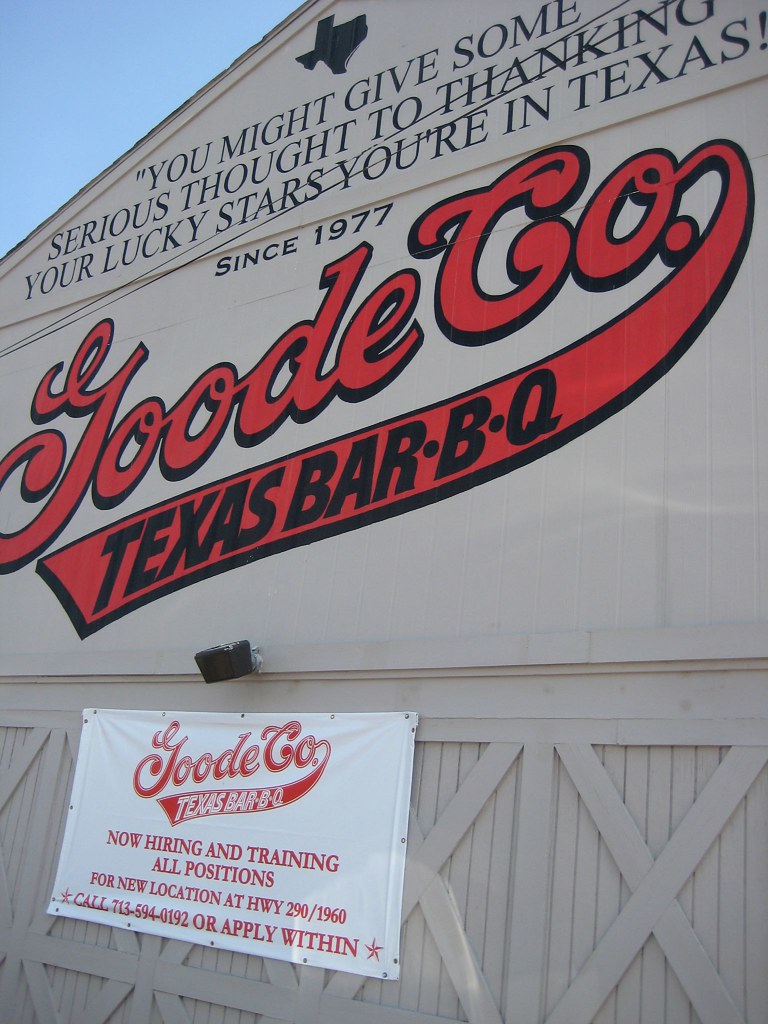


 Kevin and I'd eaten at Goode Company Bar-B-Q when we were down to cover Katrina and Rita. The brisket and pecan pie alone are worth a trip to Texas.
Kevin and I'd eaten at Goode Company Bar-B-Q when we were down to cover Katrina and Rita. The brisket and pecan pie alone are worth a trip to Texas.It will take Texans some time to completely recover from Hurricane Ike. Even as I finish writing this post on October 13, 2008, there are still about 10,000 homes without power in the areas hit hardest by hurricane Ike. I'm glad we made the trip to help cover this hurricane. We tried our best to give our viewers and readers an accurate description of the storm's power. Covering a story like this shows us the very worst of mother nature, but it can also show us the very best of the human spirit. Every day we as journalists spend an entire day working on a story, and only share two minutes at the end of the day with our viewers. I hope these last two posts were able to give you just a little bit of an insight as to what we see when we're covering something like this from the field.
-Billau

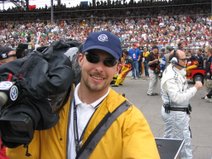
No comments:
Post a Comment